
Role of Vents in Bottles: Complete Parent Guide
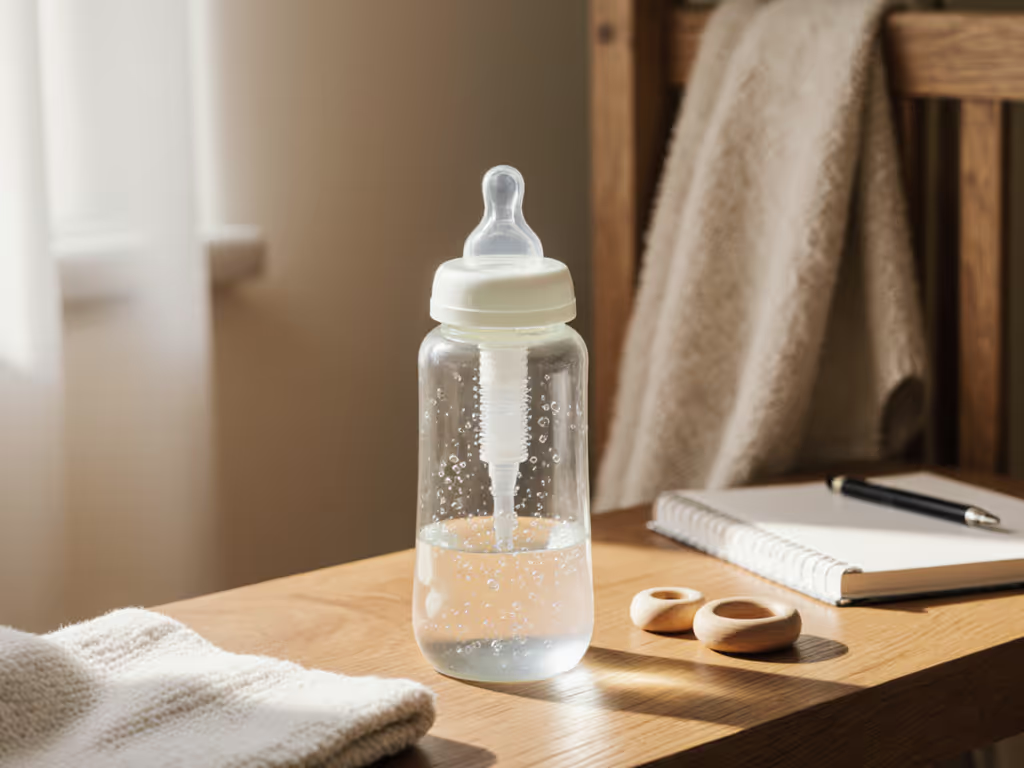
Did you know that up to 50 percent of infants experience feeding discomfort due to swallowed air? For many parents, choosing the right baby bottle can make all the difference in easing colic, gas, and fussiness. The way a bottle manages airflow directly impacts your baby's comfort and feeding success. By understanding how vents in baby bottles work, you can help create a smoother, calmer feeding experience and support your child's healthy development.
Key Takeaways
| Point | Details |
|---|---|
| Function of Vents | Baby bottle vents improve feeding by managing air pressure, enhancing the baby’s sucking, swallowing, and breathing coordination. |
| Types of Venting Systems | There are two main designs: partial anti-vacuum and complete anti-vacuum, each suited for different feeding challenges. |
| Importance of Maintenance | Proper cleaning and correct installation of bottle vents are crucial to ensure optimal performance and avoid feeding issues. |
| Vented vs Non-Vented Bottles | Vented bottles significantly enhance feeding comfort and efficiency compared to traditional non-vented bottles, reducing gas and colic risk. |
Defining Vents in Baby Bottles
A baby bottle vent is a specialized engineering mechanism designed to manage air pressure and flow during infant feeding, fundamentally improving the drinking experience for babies. These tiny but critical components allow air to enter the bottle while preventing vacuum formation, which can disrupt smooth feeding patterns and cause potential discomfort.
Research from professional medical trials reveals two primary venting design approaches. The first is a one-way air valve (partial anti-vacuum system), which facilitates controlled air entry when negative pressure builds up. The second is a more advanced internal venting system that enables continuous air circulation, even when the bottle is inverted. Both designs aim to reduce vacuum pressure and support more natural feeding dynamics.
The core purpose of bottle vents extends beyond simple air management. They help babies maintain a more consistent sucking rhythm by preventing sudden pressure changes that can interrupt feeding. By reducing air intake during drinking, vents can potentially minimize issues like gas, colic, and feeding-related discomfort. Babies can drink more comfortably and efficiently when their bottle's venting system supports natural breathing and swallowing coordination.
Key benefits of well-designed bottle vents include:
- Reduced air swallowing during feeds
- More consistent milk flow
- Decreased likelihood of gas and colic
- Improved feeding comfort for infants
- Better synchronization of sucking, swallowing, and breathing
Types of Bottle Venting Systems Explained
Infant feeding technology has evolved to include two primary venting system designs: partial anti-vacuum and complete anti-vacuum bottle systems. Each approach addresses the fundamental challenge of managing air pressure during infant feeding, but they accomplish this goal through distinctly different mechanical strategies.
The partial anti-vacuum system utilizes a one-way air valve that allows controlled air entry only when negative pressure builds up inside the bottle. This design prevents complete vacuum formation but does not provide continuous airflow. Parents might notice this system works best for babies who have moderate feeding challenges and need some air pressure regulation without total air circulation.
In contrast, the complete anti-vacuum system represents a more sophisticated approach. These bottles feature an internal venting mechanism that permits continuous air circulation, even when the bottle is inverted. This design more comprehensively manages air pressure, potentially offering superior support for infant feeding dynamics. Such systems can be particularly beneficial for babies prone to gas, colic, or those who experience significant discomfort during feeding.
Key comparison points between these venting systems include:
Here's a comparison of partial and complete anti-vacuum bottle venting systems:
| Feature | Partial Anti-Vacuum | Complete Anti-Vacuum |
|---|---|---|
| Air Entry Mechanism | One-way valve<br>Controlled air entry | Internal vent<br>Continuous airflow |
| Pressure Regulation | Reduces some vacuum | Prevents all vacuum formation |
| Design Complexity | Simple | More advanced |
| Colic/Gas Reduction | Moderate improvement | Maximum reduction |
| Milk Flow Consistency | Improved, not optimal | Very consistent |
| Best For | Babies with minor feeding issues | Babies with gas, colic, discomfort |
- Air entry mechanism
- Complexity of design
- Effectiveness in reducing gas
- Suitability for different infant feeding needs
- Overall bottle performance during feeding
Choosing the right venting system depends on your baby's specific feeding characteristics, so observing your infant's response to different bottle designs is crucial.
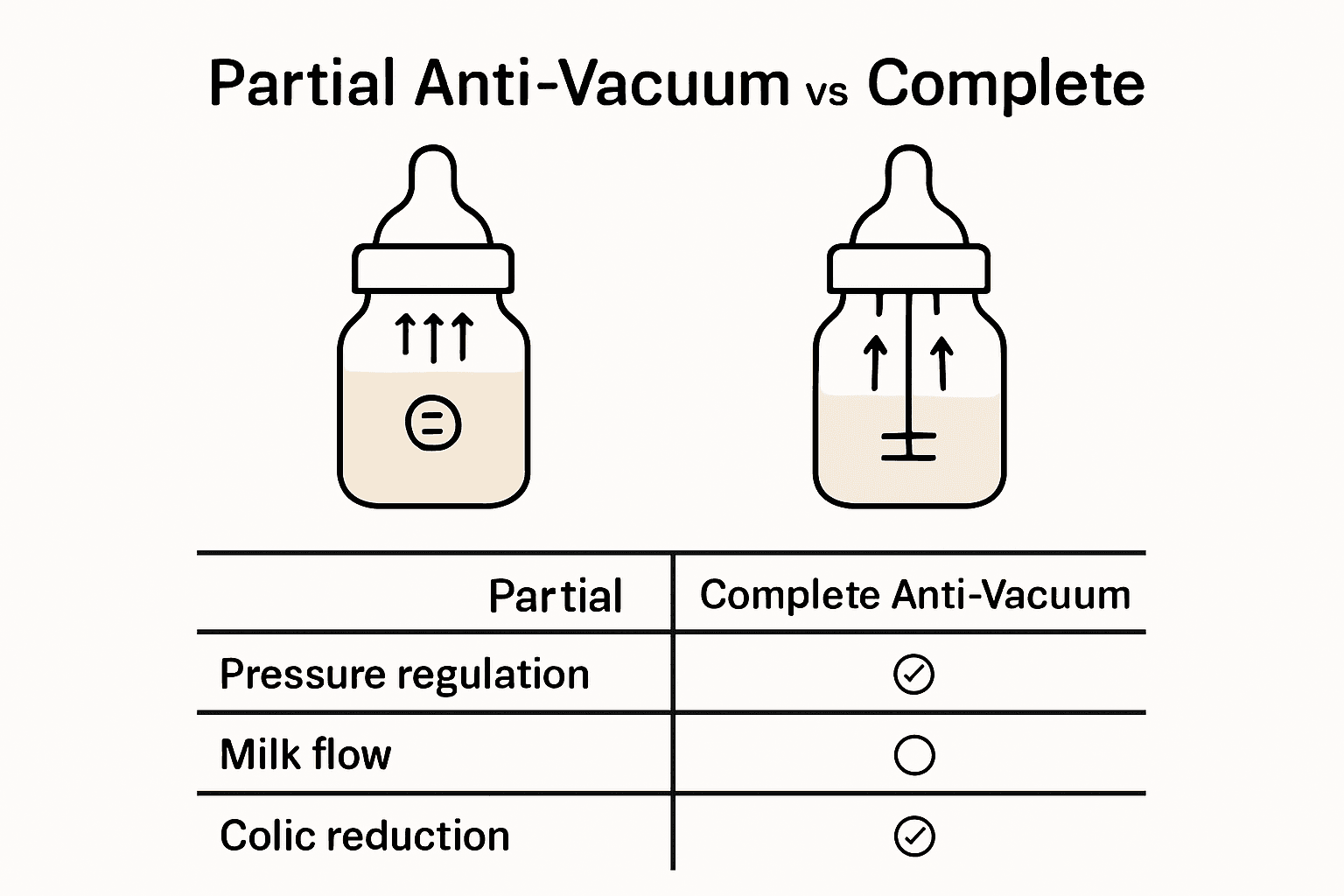
How Bottle Vents Improve Baby Feeding
Baby bottle vents represent a significant breakthrough in infant feeding technology, addressing critical physiological challenges during milk consumption. Scientific research demonstrates that these innovative systems dramatically improve feeding mechanics by enhancing the coordination between a baby's sucking, swallowing, and breathing processes.
The most profound improvement comes from pressure regulation. When babies drink from traditional bottles, negative pressure can create sudden vacuum formations that disrupt natural feeding rhythms. Vented bottles strategically manage this air pressure, allowing smoother milk flow and reducing the likelihood of air swallowing. This mechanism helps prevent common feeding complications like gas, colic, and infant distress during meals.
Research reveals remarkable behavioral benefits of vented bottles. Infants using complete anti-vacuum venting systems show measurably better feeding experiences, characterized by less distressed vocalization and more time spent awake and content. By minimizing respiratory interruptions and creating a more comfortable drinking environment, vented bottles support more natural feeding patterns that closely mimic breastfeeding.
Key physiological improvements from bottle vents include:
- Reduced air ingestion during feeding
- Better synchronization of sucking and swallowing
- Decreased risk of respiratory disruption
- More consistent milk flow
- Enhanced overall feeding comfort
The ultimate goal of these advanced venting systems is creating a feeding experience that feels as close to natural breastfeeding as possible, supporting both infant nutrition and comfort.
Common Issues and Mistakes With Vents
Bottle vent systems, while ingenious, are not immune to potential problems that can compromise their effectiveness. Many parents unknowingly encounter performance challenges that can diminish the intended benefits of these specialized bottle components, making careful maintenance and understanding crucial.
One of the most common mistakes is improper cleaning. Venting mechanisms have intricate designs with small crevices that can easily trap milk residue, bacteria, and mineral deposits. Parents might rush through cleaning or use inadequate techniques, which can lead to blockages that prevent proper air circulation. This can result in the vent losing its ability to regulate pressure effectively, essentially rendering the advanced design useless.
Another significant issue involves incorrect vent installation and alignment. Vents must be precisely positioned and securely attached to function correctly. Misalignment or loose fitting can create air leaks, disrupt milk flow, and potentially introduce additional air into the feeding process. This defeats the primary purpose of the venting system, which is to minimize air intake and create a smoother feeding experience for the infant.
Critical mistakes to watch for with bottle vents include:
- Incomplete or superficial cleaning
- Ignoring manufacturer's specific cleaning instructions
- Not replacing worn or damaged vent components
- Improper alignment during bottle assembly
- Failing to inspect vent functionality regularly
To maintain optimal vent performance, parents should develop a systematic approach that includes thorough cleaning, careful inspection, and timely replacement of components when signs of wear become apparent.
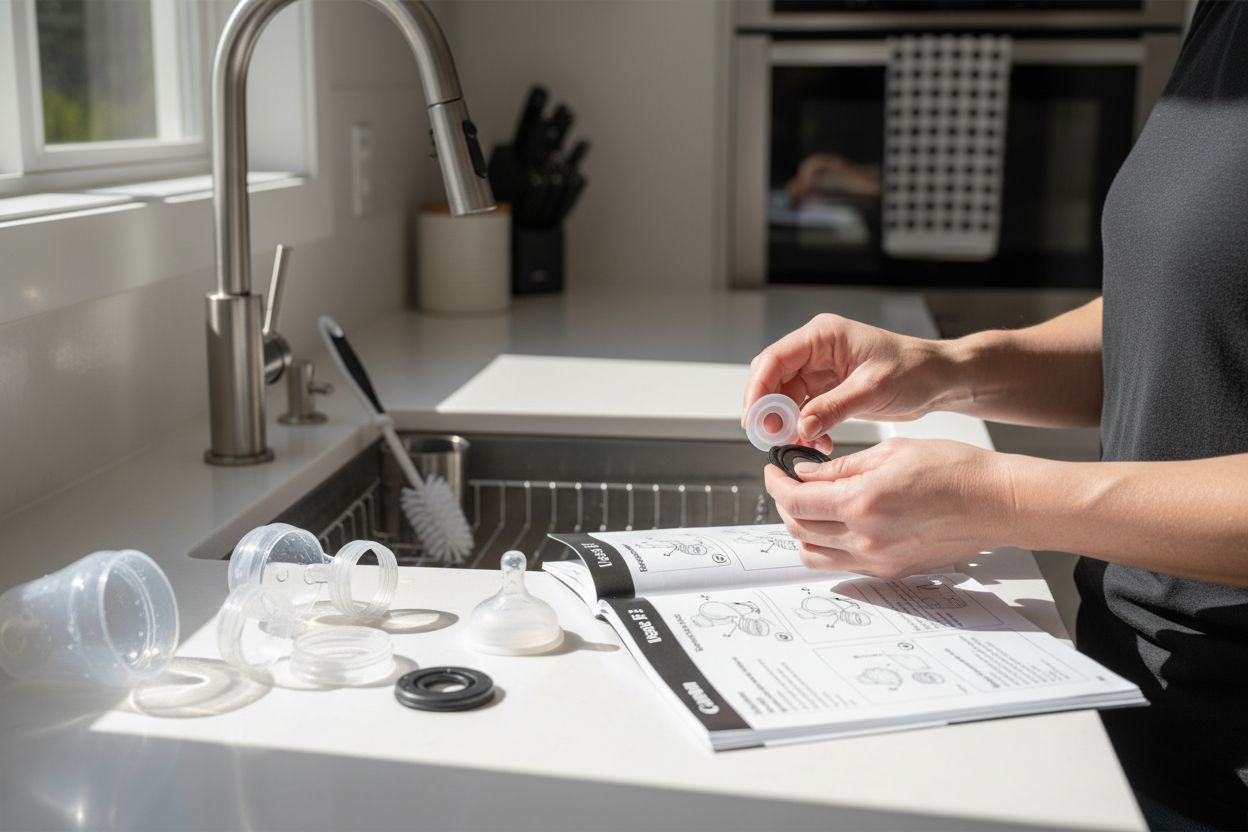
Comparing Vented vs Non-Vented Bottles
The choice between vented and non-vented bottles represents a critical decision for parents seeking optimal infant feeding solutions. While traditional non-vented bottles have been the standard for decades, modern vented bottle designs offer significant improvements in feeding mechanics and infant comfort.
Non-vented bottles operate on a straightforward principle of simple liquid transfer. Without specialized air management systems, these bottles can create vacuum pressures that disrupt feeding rhythm. Babies often experience more frequent pauses, potential air swallowing, and increased likelihood of gas or colic. The feeding process becomes more challenging, with milk flow potentially interrupted by negative pressure buildup inside the bottle.
In contrast, vented bottles represent a technological advancement in infant feeding. These innovative designs actively manage air pressure, creating a more natural drinking experience that mimics breastfeeding. By allowing controlled air entry and preventing vacuum formation, vented bottles support smoother milk flow, reduce air ingestion, and minimize feeding-related discomfort. Infants using vented bottles typically demonstrate more consistent feeding patterns and reduced instances of gas-related distress.
Key differences between vented and non-vented bottles include:
- Air pressure management
- Milk flow consistency
- Potential for gas and colic
- Feeding rhythm and comfort
- Complexity of bottle design
While non-vented bottles remain functional, vented bottles offer a more sophisticated approach to infant feeding, prioritizing both nutritional delivery and infant comfort.
Enhance Your Baby's Feeding Experience with the Right Venting Solutions
Understanding the critical role that bottle vents play in preventing gas, colic, and feeding discomfort is the first step toward calmer feeding sessions. If your baby struggles with frequent feeding interruptions or shows signs of distress related to air swallowing or irregular milk flow, it is time to explore tailored solutions designed to match their unique feeding style. Key challenges include managing air pressure, ensuring consistent milk flow, and preventing the common mistakes that reduce vent effectiveness.
At Family Bottle Fit, we provide expert guidance that helps parents select and customize baby bottles and vents with confidence. Discover how to identify the best venting system for your infant, optimize bottle assembly, and maintain vents for maximum performance. Don’t let vent problems disrupt your baby's comfort. Take control today by visiting our comprehensive resources and easy-to-follow tips at Family Bottle Fit. Your baby deserves the smoothest feeding experience possible—act now to make feeding time a joyful moment for both of you.
Frequently Asked Questions
What is the role of vents in baby bottles?
Vents in baby bottles are designed to manage air pressure and flow during feeding, improving the feeding experience for infants by preventing vacuum formation and allowing smoother milk flow.
How do bottle vents reduce feeding-related issues like gas and colic?
Bottle vents help reduce gas and colic by minimizing air ingestion during feeding, maintaining a consistent milk flow, and supporting the synchronization of sucking, swallowing, and breathing.
What are the differences between partial anti-vacuum and complete anti-vacuum venting systems?
Partial anti-vacuum systems use a one-way valve to allow controlled air entry, while complete anti-vacuum systems have an internal vent for continuous airflow, offering better pressure regulation and milk flow consistency.
How should I properly clean and maintain bottle vents?
To maintain bottle vents, ensure thorough cleaning to remove milk residue, follow the manufacturer's cleaning instructions, inspect for any damage, and align the vents correctly during bottle assembly.
Related Articles

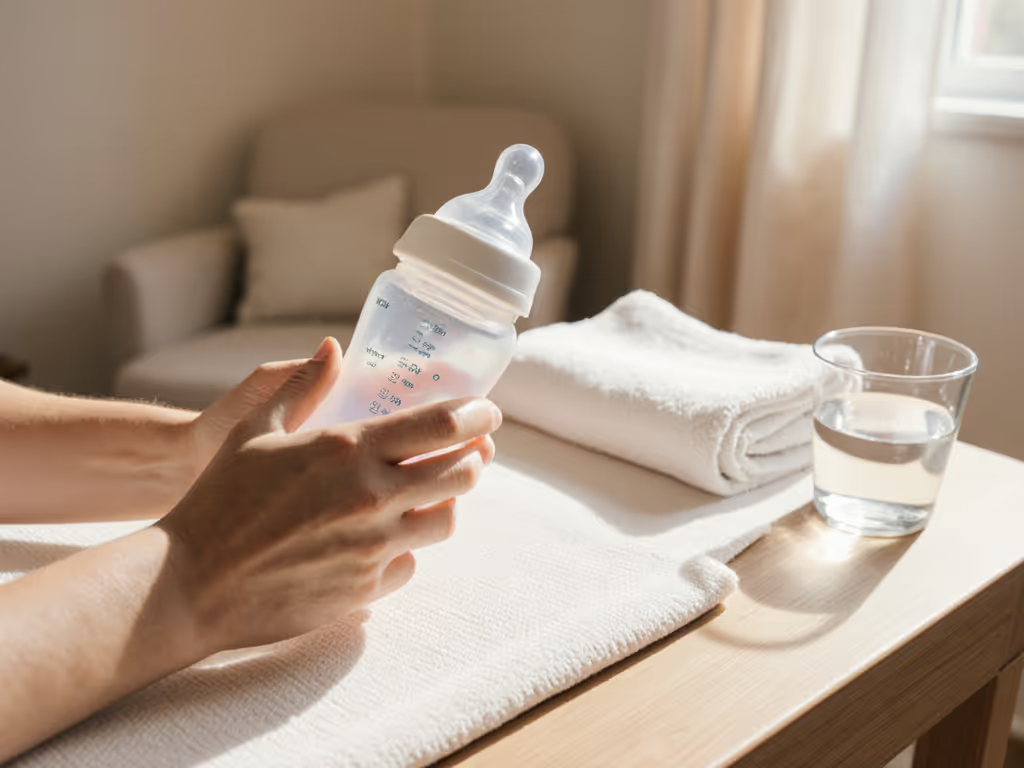
Why Slow Flow Nipples Matter: Complete Guide
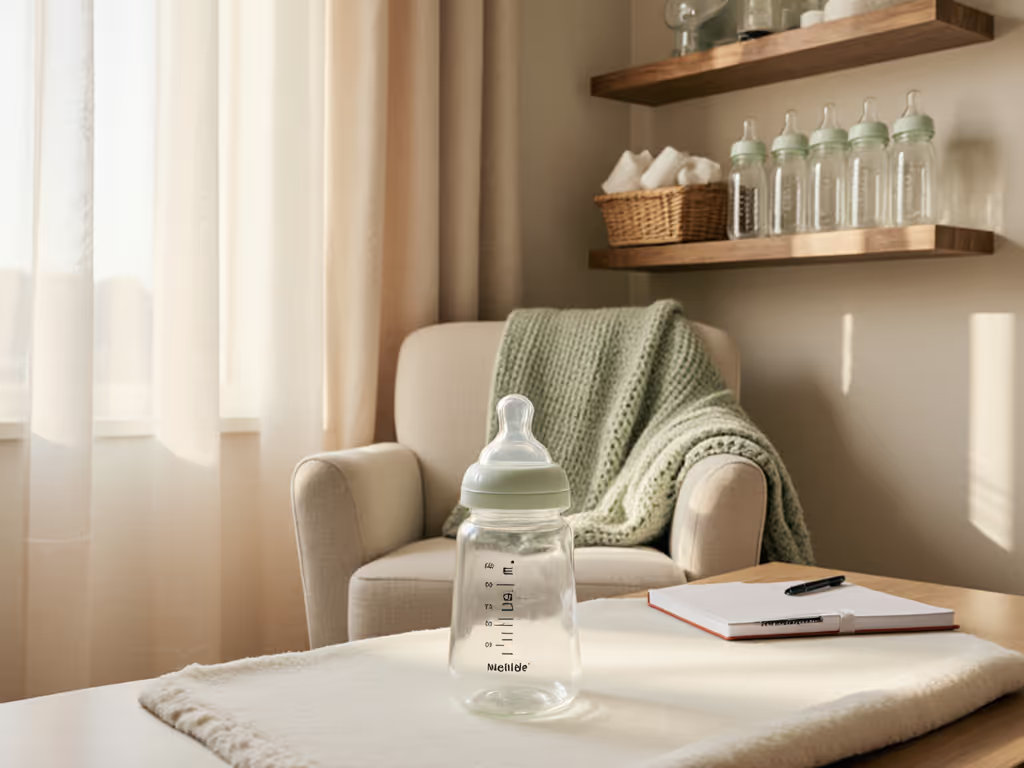
Step-by-Step Guide to Preventing Nipple Confusion Easily
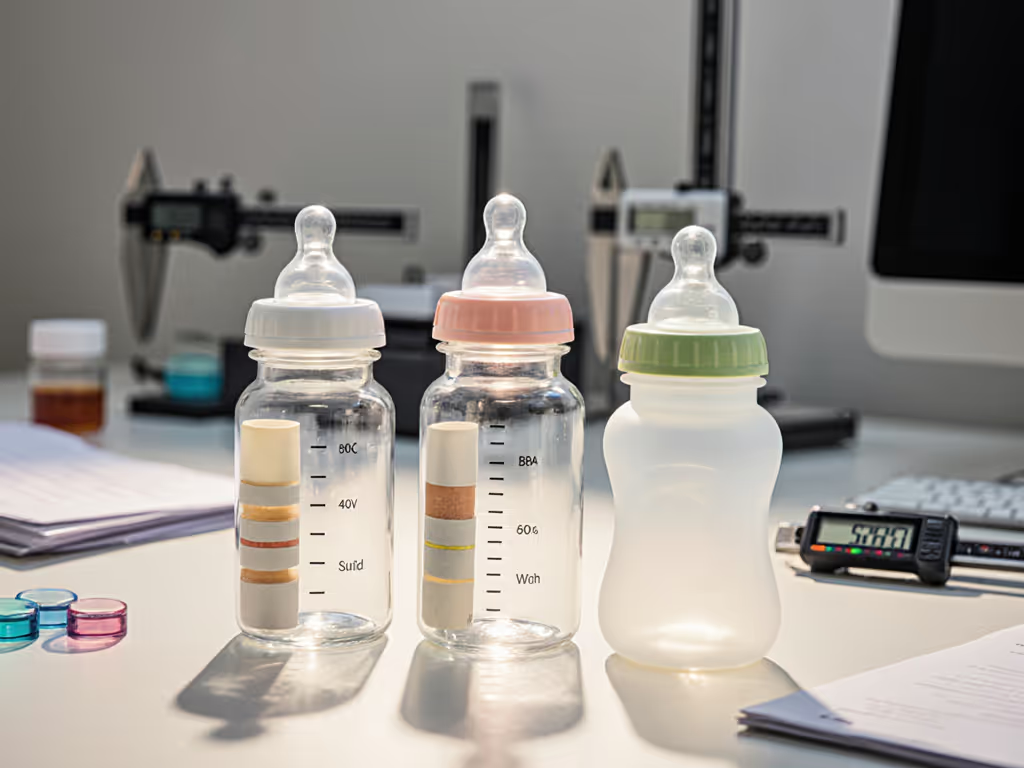
Complete Guide to the Role of Bottle Construction

